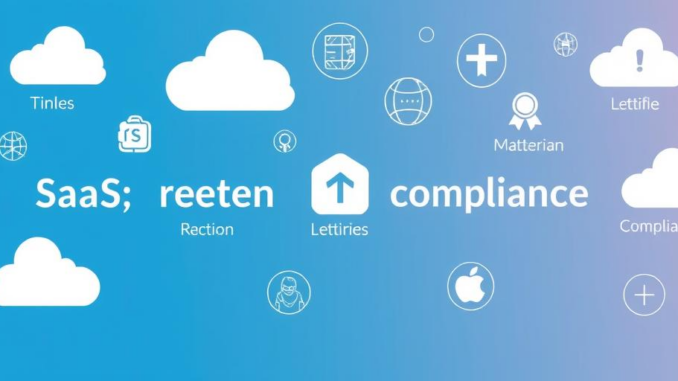
Summary
This article compares SaaS data retention policies from five major providers: Dropbox, Google, Microsoft, Salesforce, and Slack. We delve into the specifics of each provider’s approach to data retention, highlighting key differences and considerations for businesses. Understanding these policies is crucial for maintaining compliance, managing storage costs, and ensuring data availability.
Flexible storage for businesses that refuse to compromiseTrueNAS.
** Main Story**
Navigating the SaaS Data Retention Landscape
In today’s cloud-centric world, Software as a Service (SaaS) applications have become indispensable for businesses of all sizes. However, understanding the nuances of data retention policies across different SaaS providers is crucial for maintaining control over your valuable data. This article takes a comparative look at the data retention policies of five major SaaS providers: Dropbox, Google, Microsoft, Salesforce, and Slack.
Dropbox: Versioning and Retention
Dropbox’s data retention policy centers around file versioning and retention periods. For personal plans (Basic, Plus, and Family), files and their versions are retained for 30 days after deletion. Professional and Business plans extend this period to 180 days, while Enterprise and Advanced users benefit from a 365-day retention period. This versioning system allows users to recover previous versions of files, providing an added layer of protection against accidental deletion or modification.
Google: Varied Approaches Across Services
Google’s data retention policies vary significantly across its different services. For Google Drive, files moved to the trash are automatically deleted after 30 days, mirroring the behavior of Gmail. However, Google Cloud Filestore, a managed file storage service, offers no such grace period. Data deleted from a Filestore instance is permanently lost unless a backup is in place. This discrepancy highlights the importance of understanding the specific retention policies for each Google service.
Microsoft: Retention Policies and eDiscovery
Microsoft offers robust retention policies within its Microsoft 365 suite. Administrators can define retention periods for different data types, ensuring compliance with regulatory requirements and internal policies. Microsoft also provides eDiscovery capabilities, allowing organizations to search and retrieve data for legal or compliance purposes, even after it has been deleted. However, relying solely on Microsoft’s native retention features may not be sufficient for comprehensive data protection. Third-party backup solutions are often recommended for enhanced security and recovery options.
Salesforce: Emphasis on Data Privacy
As a customer relationship management (CRM) platform, Salesforce prioritizes data privacy in its retention policies. The platform adheres to data privacy regulations, including the “right to be forgotten,” which requires organizations to delete customer data upon request. Salesforce allows users to customize their data retention policies to automate data storage, anonymization, and deletion processes. Standard retention at Salesforce is 180 days, with deleted messages stored in the recycle bin for 15 days before permanent deletion.
Slack: Workspace Retention and Data Removal
Slack’s data retention policy is relatively straightforward. For paid plans, all messages and files are retained for the lifetime of a customer’s workspace, unless deleted by a user or subject to a specific retention policy. Slack removes deleted and expired data from its production servers nightly, with permanent deletion from backup systems occurring within 14 days. This policy offers simplicity but may require additional measures for organizations with long-term archiving needs.
Choosing the Right Policy for Your Needs
Understanding the nuances of SaaS data retention policies is paramount for businesses. When selecting a SaaS provider, carefully consider the following factors:
- Data Types: Different data types may have varying retention requirements based on regulatory and business needs.
- Retention Periods: Evaluate the length of retention periods offered by different providers and ensure they align with your requirements.
- Data Recovery: Assess the data recovery options provided by each provider, including versioning, backup and restore capabilities.
- Compliance: Ensure the provider’s data retention policies comply with relevant regulations, such as GDPR, HIPAA, and industry-specific standards.
- Cost: Consider the costs associated with data storage and retention, as different providers may have varying pricing models.
By carefully evaluating the data retention policies of different SaaS providers, businesses can make informed decisions that protect their valuable data, ensure compliance, and optimize storage costs. Remember that these policies can change over time, so it’s essential to stay updated on any revisions and adjust your data management strategies accordingly. As of April 6, 2025, this information is current, but it is always best to consult the provider’s official documentation for the most up-to-date information.


The comparison of data retention policies across major SaaS providers is insightful. How might organizations leverage these differences to implement a multi-vendor strategy for data redundancy and disaster recovery, minimizing risks associated with single-provider outages or data loss events?
That’s a great point! Diversifying vendors definitely adds a layer of resilience. Thinking about how different providers handle backups and recovery could be a key factor in that multi-vendor approach. It would be interesting to hear how other organizations are currently structuring that!
Editor: StorageTech.News
Thank you to our Sponsor Esdebe